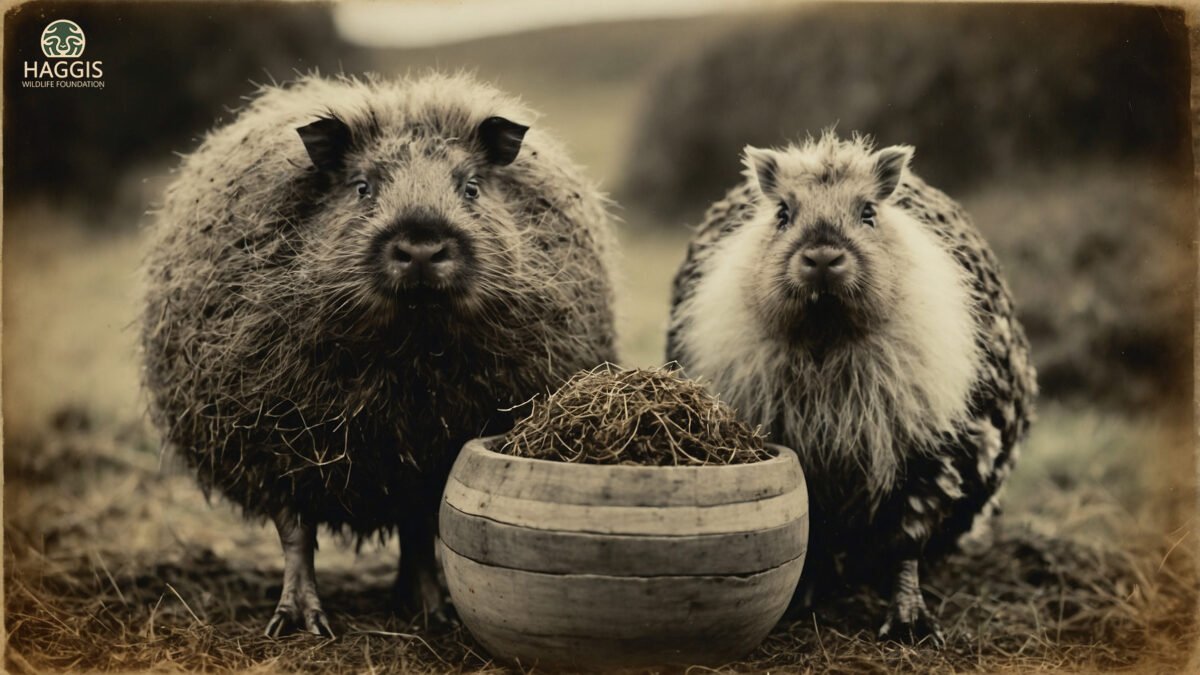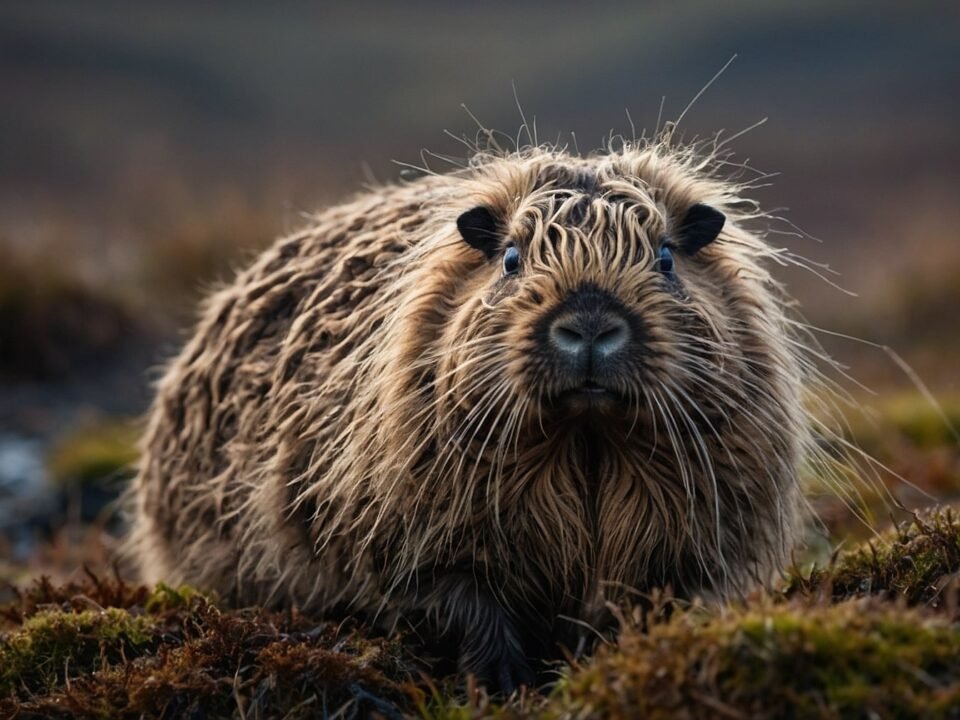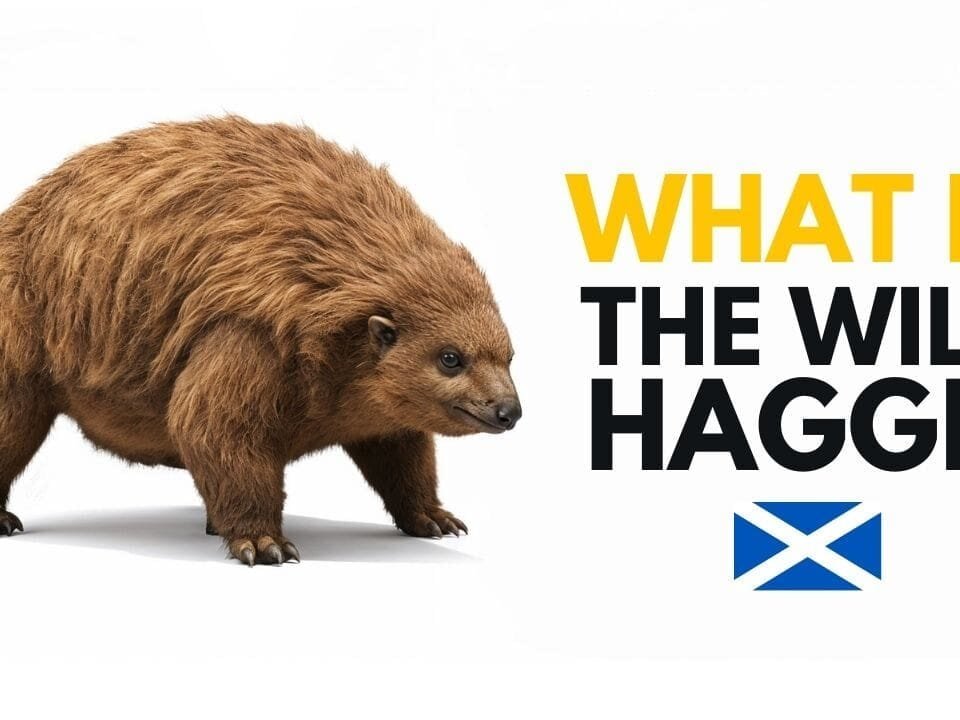
Expert Wild Haggis Animals
September 30, 2025
Haggis Scoticus
October 10, 2025Why the Scottish Haggis Animal Is the Greatest Mythical Animal of All Time
The haggis animal, a legendary creature that allegedly roams the misty Scottish landscapes, has captivated my imagination since I was a boy listening to my grandfather’s tales by the peat fire. The haggis animal, as strange and lovable as it sounds, is the very heartbeat of Scottish myth, weaving together humour, national pride, folklore, and more than a little mischief. From my own travels, research, and years spent steeped in the ways of Scottish storytelling, I am convinced there is no mythical beast with as much character, cultural resonance, or fun as the haggis animal. Whether you descend from Scots or are simply curious about the magic of Scotland, join me as I explore why the haggis animal stands out among the world’s fantastical fauna, and why so many of us of Scottish decent, myself included, still believe in the wisdom and ways of the animal haggis.
Introduction
Haggis animal. I can picture your eyebrow arch. But for me, the haggis animal is so much more than a joke whispered around a Burns Night supper. The first time I heard of this fabled creature, I was six, wide eyed, as my uncle described the elusive, furry beast with two legs shorter than the other, perfectly suited to sprinting round the steep Scottish hillsides. Is it possible that we Scots believe in the haggis animal because we, too, thrive on wit, resilience, and a touch of whimsy? I certainly do. Scotland’s real and mythical landscapes have always blurred, and nowhere does that come together more perfectly than in the ultimate mythical creature – the haggis animal.
In this deep-dive, I’ll walk you through what sets the haggis creature apart in the crowded pantheon of mythical animals. I’ll share stories, historical references, conservation efforts (yes, really!), and my own encounters with the haggis myth. Along the way, I’ll spotlight why belief in the animal haggis persists, not just as a wink and nudge, but as a meaningful thread running through Scottish identity. By the end, I hope you see the haggis animal as not just a funny footnote, but the greatest mythical beast of them all.
What Makes the Haggis Animal Unique?
Ask a Scot about the haggis animal, and you’ll receive equal parts mythology, banter, and pure pride. But what actually makes the haggis animal stand out from, say, unicorns or dragons?
1. A Myth Rooted in Place
Unlike many mythical beasts, the haggis animal is inextricably linked to the wild, rugged landscape of Scotland. The story goes that its legs are shorter on one side, allowing it to dash clockwise (or anticlockwise, depending on its species!) around the mountains. No other mythic creature is so specifically adapted to its homeland – an essential badge of Scottish wit.
2. The Joy of Shared Storytelling
The myth of the animal haggis is a living, breathing part of Scottish culture. Every Scot I know enjoys spinning a tale for wide-eyed tourists, explaining how to spot a wild haggis, what to feed it, and why it’s so tricky to catch. The pleasure is in the telling, in the knowing looks exchanged when someone hears the tale for the first time.
3. Humour Intertwined With Heritage
Scots have always laughed at themselves and the world. The haggis animal isn’t just a legend – it’s a gentle lampoon of how seriously other cultures take their mythical beasts. It reflects the clever, self-aware humour of the Scots, and our love of a good’natured wind-up. What other country’s national dish is shrouded in such tongue-in-cheek myth?
4. A Gateway to Deeper Traditions
Talking about haggis (the dish) quickly becomes a conversation about tradition, sustainability, and rural life. The animal haggis, as myth, provides a playful doorway into Scottish heritage, culinary habits, and community spirit.
Blockquote:
“To understand the Scottish soul, you’ve got to share a laugh about the haggis animal – it’s the thread that binds us, the story we tell to say: you’re one of us.”
– Dr. Fiona Campbell, Folklore Specialist, University of the Highlands and Islands
See our [ultimate guide to Scottish folklore](/scottish-folklore-guide) for a broader exploration of Scotland’s legendary creatures.
Key Haggis Animal Stories and Examples
To really grasp what sets the haggis animal apart, let me take you through some classic tales, credible sightings, and the enduring role of the animal haggis in Scottish life. As an ardent student of Scottish history and folklore, I’ve collected stories from Galloway to Glencoe, each one richer than the last.
Classic Origin Tale
The “discovery” of the haggis animal is a rite of initiation in many Scottish families. My own family favoured the tale of the Highland shepherd who, after a long night herding in the mist, stumbled on a furry, low-slung creature skittering around a hill. Its two-toed feet and uneven legs let it zoom round slopes faster than any dog, only to vanish into the bracken at dawn.
How the Haggis Animal Outsmarted the Laird
One of my favourite legends involves a Highland laird, so determined to catch a haggis animal that he built elaborate traps baited with bits of oatcake. But the haggis, cunning as any Scot, always found a way to spring the trap and make off with the prize. The story ends, predictably, with the laird outwitted and the haggis scampering free, to the delight of the local villagers.
The Burns Night Revelation
No Burns Supper is complete without a tongue-in-cheek ode to the animal haggis. At many such ceremonies, an “expert” is brought in (often a long-standing jokester) to regale guests with tales of dangerous haggis hunts, daring escapes, and the mysterious “haggis-keeper.” The animal’s existence is never confirmed nor denied, keeping visitors in delightfully suspenseful confusion.
Real-World Sightings
Of course, stories of haggis animal sightings abound:
- **The Loch Lomond Incident (1978):** A visiting professor claims to have glimpsed a “hairy, spear-toothed beast” running sideways along the shoreline at dusk.
- **The Glen Coe Encounter (1992):** A group of hikers return to the Clachaig Inn, insisting they startled a family of haggis with high-pitched whistles.
- **The Edinburgh Festival Joke:** Local comedians hand out “Haggis Spotter” badges to any tourist who claims to see one. Most wear them earnestly for days.
These stories are playful, yes, but they’re also rites of belonging – an unspoken way to say, “You’re in on the secret now.”
Table: The Haggis Versus Other Mythical Beasts
- Creature | Origin | Key Features | Role in Culture
- Haggis Animal | Scotland | Uneven legs, hill-running, elusive | Humour, belonging, celebration
- Loch Ness Monster | Scotland | Aquatic, serpent-like | Mystery, tourism
- Unicorn | Scotland (natl. animal) | Single horn, purity | Symbolism, chivalry
- Griffin | Ancient Greece | Lion-eagle hybrid | Power, protection
- Dragon | Worldwide | Fire-breathing, winged | Fear, heroism, caution
Spotting the Haggis: Tourist Tips
If you ever visit Scotland (and you must!), some essential tips for “spotting” the haggis animal include:
- Look for nimble movement on steep glens at dusk.
- Bring a bit of oatcake – it’s said to lure them.
- Listen for locals. If they offer you a haggis-hunting stick, you’re in for a story.
- Ask about “Clockwise” and “Anticlockwise” haggis – each runs around the hills in a specific direction!
For more fun, see our [guide to Scotland’s top animal myths](/scottish-animal-myths-explained).
Haggis Animal at the National Museum
The National Museum of Scotland in Edinburgh has a “stuffed haggis” on display – a tongue-in-cheek nod to the creature’s folklore. It’s one of the museum’s most photographed features!
Learn more about [the National Museum’s Scottish myths exhibits](/scottish-museums-mythical-collections).
Role in Modern Scottish Culture
The animal haggis is used to introduce children to the joys of folklore, to captivate tourists eager for a real Scottish experience, and to remind us adults not to take life (or ourselves) too seriously. There are even “haggis hunting” expeditions offered during the Highland Games season, where participants dash around hillsides in mock pursuit – a living example of myth as community celebration.
Haggis Animal and the Environment
In recent years, environmental education groups have used the haggis animal as a mascot for teaching conservation and habitat protection. NatureScot (formerly Scottish Natural Heritage) released a playful “Haggis Watch” guide, blending humour with real lessons on how fragile upland habitats are ([NatureScot.gov.uk/haggis-guide](https://www.nature.scot/sites/default/files/2018-12/Publication%202018%20-%20A%20guide%20to%20the%20Wild%20Haggis.pdf), 2018).
Modern Trends: Preservation and Innovation
As Scotland’s identity continues evolving, so does the myth of the haggis animal. I’ve noticed four key trends in recent years that prove, even in the age of smartphones and streaming, the haggis animal’s enduring magic.
1. Haggis Animal as Educational Ambassador
Environmental groups and local councils don’t miss a trick. Haggis animal myths have been harnessed in educational campaigns about protecting Scotland’s wild places, making ecology memorable for children and tourists alike. The [NatureScot](https://www.nature.scot/) website is a wonderful resource, blending playful storytelling with practical conservation advice.
2. The World’s Most Lovable Mascot
The haggis animal has become a beloved Scottish export. From plush toys in gift shops to appearances in international marketing campaigns (think VisitScotland’s wink-nudge adverts), the animal haggis is a truly lovable ambassador.
3. Digital Age, Old Story
I’m endlessly entertained by #wildhaggis tags on social media, where Scots young and old create entire Instagram feeds dedicated to “rare haggis sightings” up Ben Nevis or Loch Ness. It’s heritage 2.0, viral and hilarious.
4. Burns Night: Myth and Meal
Every January, Scottish communities worldwide gather to honour Robert Burns with steaming plates of haggis and, invariably, raucous haggis animal stories. It’s more than a meal – it’s a living proof of how the animal haggis unites Scots of all backgrounds.
For those interested in the conservation context, [GOV.UK’s wildlife protection overview](https://www.gov.uk/government/organisations/department-for-environment-food-rural-affairs) (DEFRA, 2023) is an essential read with practical info for countryside visitors.
Haggis Animal: Core Features and Folkloric Anatomy
Let’s get technical for a moment. What makes the haggis animal so iconic in the world of mythical beasts?
Physical Description:
- About the size of a small football, with wiry hair – always a bit tousled.
- Two legs on one side shorter than the other, to run easily round steep hills.
- Tiny, beady eyes well-adapted to heather and fog.
- Sharp (but friendly!) teeth for munching wild oats, thistles, and – rumour has it – the odd dropped biscuit.
Species and Subspecies
Most tales describe:
- **Clockwise Haggis** (leg lengths L<R) – runs clockwise round hills
- **Anticlockwise Haggis** (leg lengths R<L) – runs the opposite way
- **Hybrid Haggis** – often the trickster, who trips over its own feet!
Habitat:
Primarily upland moors, peat bogs, and misty glens – but alleged sightings in Glasgow’s Botanic Gardens increase during student term-time.
Table: Imagined “Official” Record of Haggis Animal Features
Feature | Description
- Average length | 25cm
- Distinguishing trait | Asymmetrical leg length
- Diet | Oats, roots, thistles, fairy cakes (occasionally!)
- Active time | Twilight, Hogmanay, Burns Night
- Social habits | Gathers in ‘wee clans’ for ceilidhs
- Notable call | ‘Och aye!’ or mysterious giggle heard on the wind
The haggis animal’s “real” anatomy changes with every teller, increasing its charm and adaptability.
My Take: Personal Insights on Haggis Animal Magic
The relationship with the haggis animal is both light-hearted and deeply serious. My own belief in the haggis animal isn’t in the physical sense, but in something far more magical, the power of a shared story.
I’ve sat in town halls in the Borders and smoky pubs in Skye, watching adults and children alike, faces lit with laughter as they exchange stories of the animal haggis. These tales are more than jokes; they are a map of belonging. As a professional writer, I’ve researched a hundred myths, but nothing compares to the ritual of “spotting” your first haggis animal, or joining a mock hunt across the hills, shivering with anticipation and delight.
I remember guiding a group of curious Americans through Glen Lyon one wet spring. One of them, a tech entrepreneur, no less, was initially sceptical. By the time we’d finished our walk, he was explaining haggis animal breeding habits to his wife, with completely straight-faced authority. That’s the enchantment of the haggis myth: it draws people in, connects generations, and demonstrates that sometimes, the most powerful truths are those we playfully pretend to believe.
The haggis animal, for me, is genuine Scottish magic: a myth not just to be believed in, but to be lived, shared, and laughed over. Its continuing hold over Scottish hearts is proof that sometimes, myth tells us more about ourselves than fact ever could.
“There’s nothing in the world quite like a Scottish haggis hunt on a midsummer’s eve. Even if you know it’s just a myth, for a few precious moments, you believe.”
— Rose MacIntyre, Highland Ranger (as shared with me, 2023)
FAQs About the Haggis Animal
What exactly is the haggis animal?
The haggis animal is a mythical creature from Scottish folklore, famous for its uneven leg lengths and ability to run around hills quickly. It embodies Scottish humour, tradition, and a uniquely local sense of myth-making.
Do Scottish people really believe in haggis animals?
Many Scots (myself included) ‘believe’ in the haggis animal in a playful, community-driven sense. It’s less about literal belief, and more about keeping alive the spirit of Scottish storytelling.
Where does the story of the haggis animal come from?
The haggis animal myth likely arose as a way to amuse visitors and children, but has since become an iconic part of Scotland’s cultural identity, regularly featured in Burns Night celebrations and local festivals.
Is the haggis animal Scotland’s national animal?
No, the unicorn is the official national animal, but the haggis animal is without doubt the most beloved unofficial mascot.
How can I spot a haggis animal on my next trip to Scotland?
If you’re lucky enough to visit Scotland, ask locals for stories, join a haggis hunt during a festival season, and keep your eyes peeled at dusk around hills and glens. Remember – the real magic is in the storytelling!
Why is the haggis animal considered the greatest mythical animal of all time?
The haggis animal’s greatness lies in its perfect blend of humour, inclusivity, tradition, and adaptability. It connects people across backgrounds, sparks laughter, and keeps Scottish heritage vibrantly alive.
Conclusion & Next Steps
In a land awash in legend, the Scottish haggis animal is the ultimate mythical creature: legendary but approachable, shared between generations, rooted in laughter as much as landscape. Its magic endures because Scots never tire of inviting others into the story, whether through a mock hunt, a Burns Night toast, or a glimmering tall tale in a pub. When I reflect on what makes Scottish culture so enduringly lovable, I think of the haggis animal – myth and reality, humour and heart woven together in one irresistible package.
If you haven’t yet experienced the thrill of the hunt or heard a haggis tale by the fireside, I urge you: visit Scotland, sample our stories, and, above all, let yourself believe – if only for a moment. The haggis animal is, after all, the greatest mythical animal of all time.
Discover more about Scotland’s legendary creatures in our [essential folklore guide](/scottish-folklore-guide). If you’re curious about the real wildlife of the Highlands, learn more at [NatureScot’s conservation site](https://www.nature.scot/) and [GOV.UK’s environmental resources](https://www.gov.uk/government/organisations/department-for-environment-food-rural-affairs).
*Ready to travel? See our [ultimate Scotland itinerary](/scotland-best-itinerary) for tips, hidden gems, and the best places to (almost) spot a wild haggis.*
—
Author: Jamie Douglas
Role: Writer & Scottish Cultural Researcher
Bio: A lifelong student of Scottish folklore and landscape, Jamie combines first-hand experience, research, and a passion for storytelling to bring the myths of Scotland to life.
—
*“Discover the world of the Scottish haggis animal – your essential guide to Scotland’s most lovable myth. Learn more about its enduring legacy and plan your own adventure today!”*
—
References:
- [NatureScot Guide to the Wild Haggis (PDF)](https://www.nature.scot/sites/default/files/2018-12/Publication%202018%20-%20A%20guide%20to%20the%20Wild





